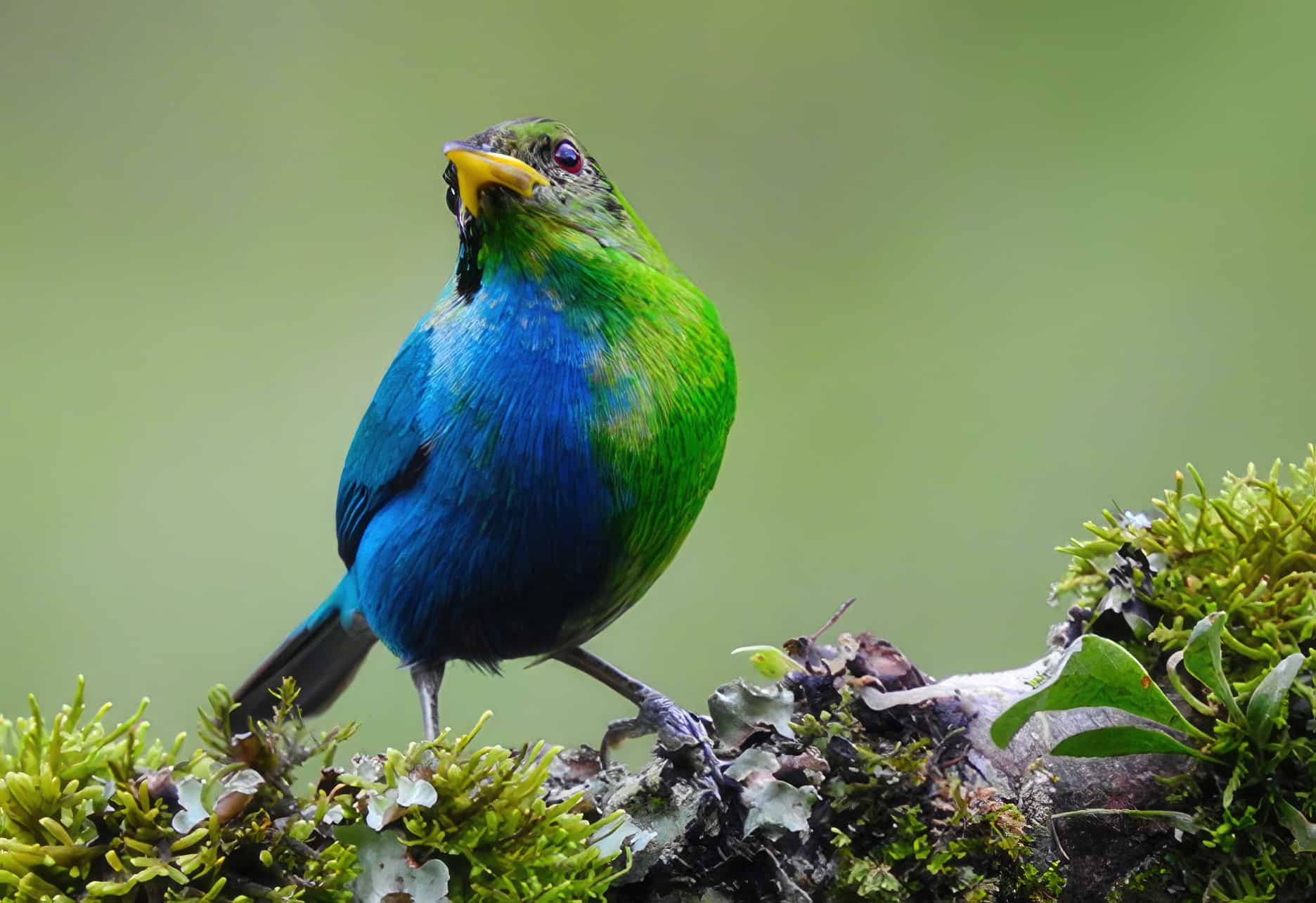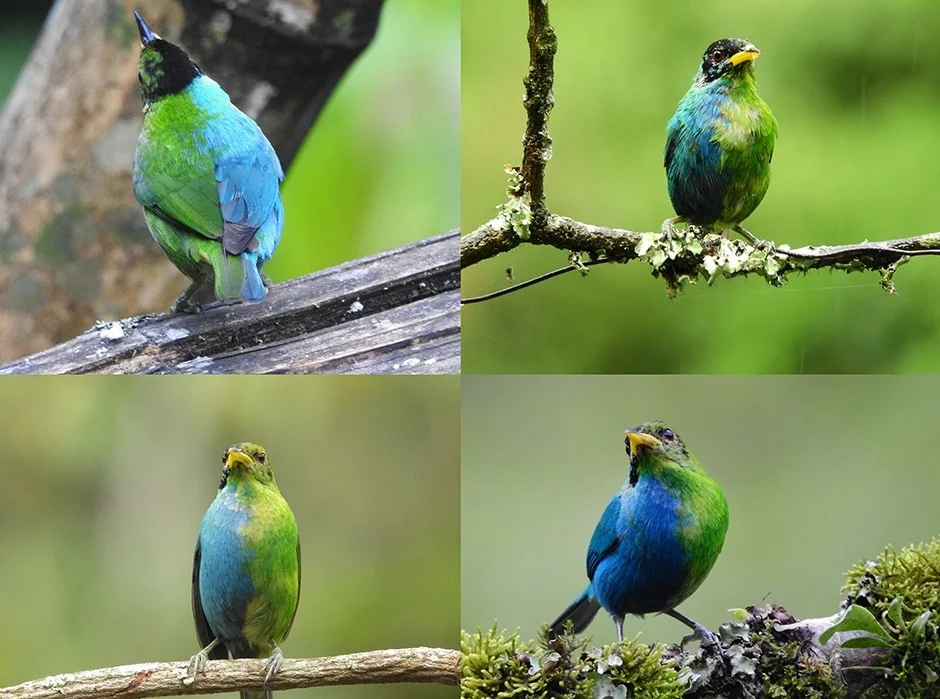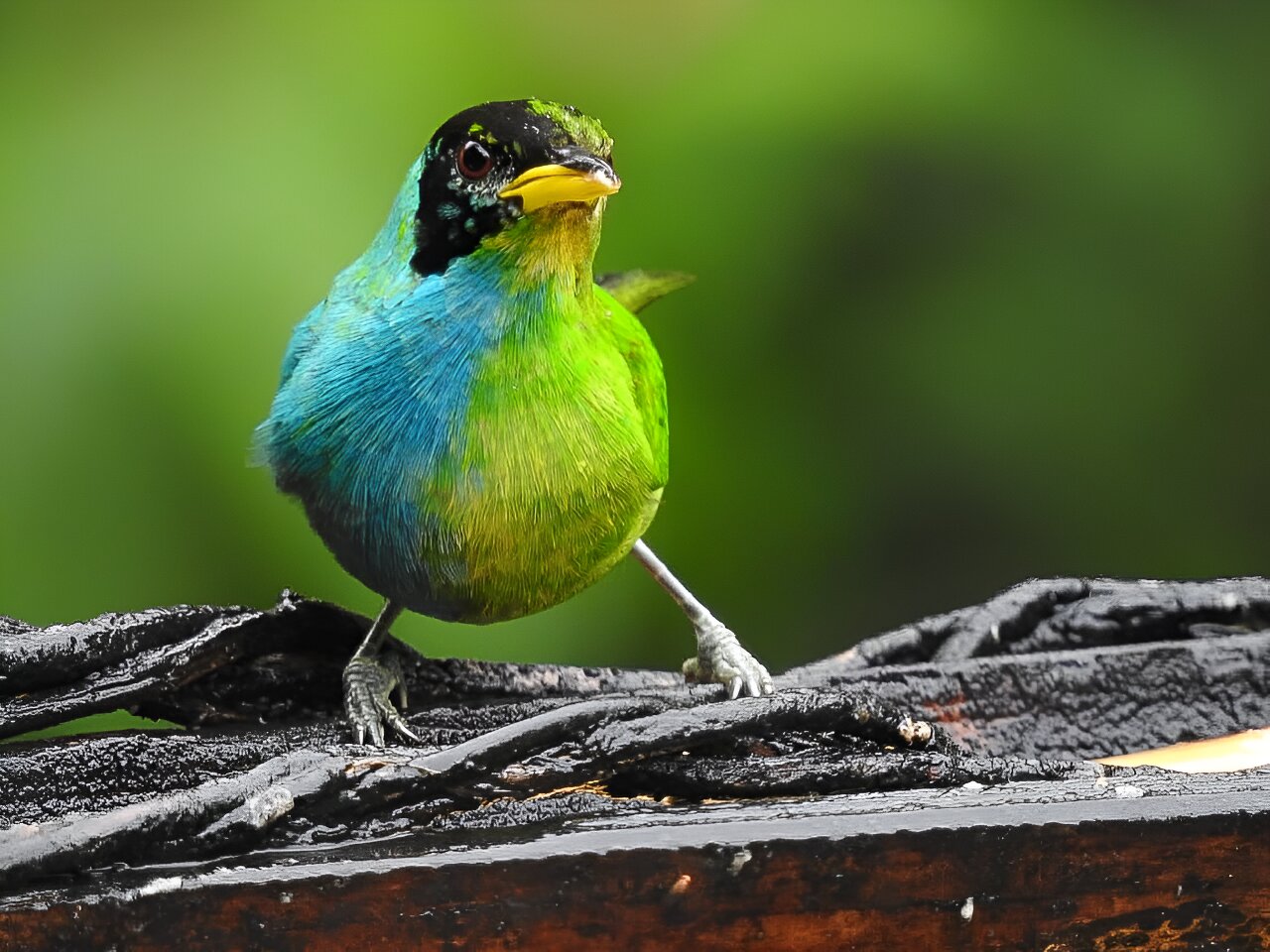A bird exhibiting the rare half-female, half-male condition is known as a gynandromorph. This phenomenon can occur in various bird species, including hummingbirds like the rufous-crested coquette (Lophornis delattrei).

Gynandromorph birds possess both male and female traits, typically divided along the vertical axis of their bodies. One side of the bird displays male characteristics, such as vibrant colors and distinctive feathers, while the other side exhibits female traits, which are usually less colorful and lack male-specific features. This unique appearance makes gynandromorph birds particularly striking and interesting.

Gynandromorphism occurs due to an unequal division of sex chromosomes during the early cell divisions of the embryo. Instead of developing into an individual with a single, defined sex, this unequal division results in an organism with two different sets of sex chromosomes, leading to the development of both male and female characteristics in a single individual.

Due to their mixed characteristics, the behavior of gynandromorph birds can be quite complex and varied. They might display courtship behaviors and territorial defense typical of males, or they might exhibit nesting behaviors typical of females. However, the reproductive capability of gynandromorph birds is usually limited because their reproductive organs are often incomplete and not fully functional.

The occurrence of gynandromorph birds provides valuable insights into biological development and genetics. Studying these individuals can offer important information about genetic mechanisms and the development of sexual characteristics in nature.
Gynandromorph birds are a fascinating natural phenomenon, offering significant knowledge about genetics and biodiversity.